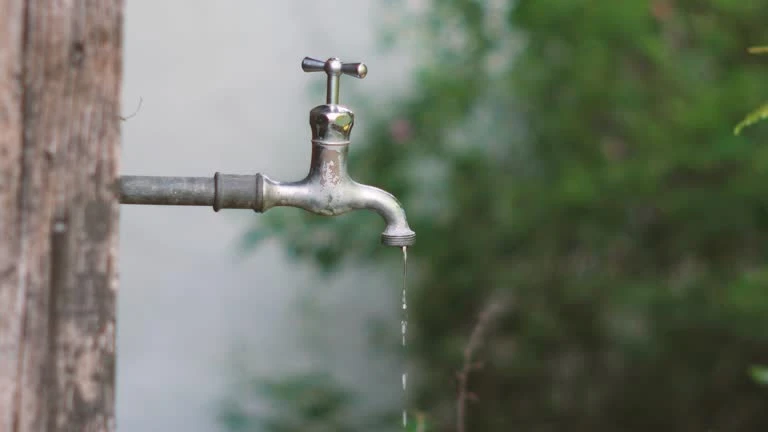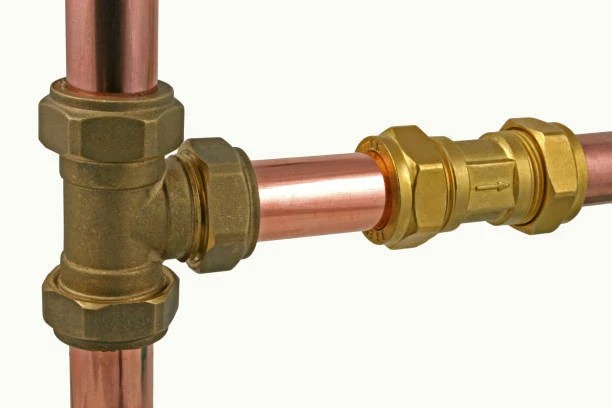As winter approaches and temperatures drop, many homeowners begin to worry about their outdoor faucet freezing. A frozen outdoor faucet can cause pipes to burst, leading to water damage and costly repairs. For years, the standard advice has been to let your outdoor faucet drip to prevent freezing, but is this really the best approach? Experts have weighed in on the subject, offering a more nuanced perspective on the practice.
In this article, we will explore whether you should let your outdoor faucet drip to prevent freezing, the pros and cons of this method, and expert recommendations for protecting your outdoor plumbing.
The Problem with Freezing Outdoor Faucet
When temperatures dip below freezing, water inside pipes can freeze and expand, putting pressure on the pipes. If the pressure is too much, the pipe may burst, causing significant water damage and the need for expensive repairs. This is especially a concern for outdoor faucets, which are exposed to the cold and can easily freeze if not properly protected.
In many homes, outdoor faucets are connected to pipes that run along exterior walls, which are more prone to freezing than pipes located inside the home. Since these faucets are used less frequently, they are often overlooked when preparing a home for winter, making them vulnerable to freezing and rupture.
To prevent such issues, many homeowners are advised to drip their outdoor faucets to keep water flowing and avoid freezing. However, this advice isn’t always as straightforward as it might seem.
The Traditional Advice: Let the outdoor faucet Drip
The advice to let an outdoor faucet drip during freezing temperatures is based on the idea that moving water is less likely to freeze. Here’s how the practice works:
- Water Flowing Through the Pipe: The theory is that if water is constantly moving through the faucet, even at a slow drip, it will be less likely to freeze. Stagnant water is more susceptible to freezing, but moving water is harder to freeze, even in cold weather.
- Reducing Pressure: If the water in the pipe does freeze, the pressure in the system can build up and cause the pipe to burst. By allowing the faucet to drip, you reduce the likelihood of pressure building up in the system, as water can still flow through the pipe.
While this approach can be effective in preventing freezing, it is not without its downsides.
The Experts Weigh In: Is Dripping Your Outdoor Faucet Really Necessary?
While many experts agree that dripping faucets can help prevent freezing in certain circumstances, they also caution that it may not be the most efficient or environmentally friendly solution. Here are some expert opinions on the practice:

1. Waste of Water
One of the primary concerns with letting outdoor faucets drip is the significant waste of water. A slow drip can waste hundreds to thousands of gallons of water over the course of the winter. According to the Environmental Protection Agency (EPA), a faucet that drips once per second wastes about 3,000 gallons of water per year. If you live in a region with water scarcity or are trying to reduce your environmental impact, this can be an issue.
In addition to water wastage, the energy used to pump and heat the water adds to your overall utility costs. Allowing your faucet to drip may contribute to higher water and energy bills, especially if you are using hot water to prevent freezing.
2. Overkill for Well-Insulated Pipes
For many homes, especially those with properly insulated plumbing, dripping outdoor faucets may not be necessary. If your pipes are adequately insulated, the risk of freezing is much lower, even in freezing temperatures. Experts recommend insulating your pipes as the most effective way to protect your plumbing from the cold.
Insulation acts as a barrier, keeping the pipes warm enough to prevent freezing, and it doesn’t waste any water. Adding foam pipe insulation or using heat tape around vulnerable pipes are great solutions that can prevent freezing without the need for constant water flow.
3. Frost-Proof Faucets: A Better Solution
According to plumbing experts, installing a frost-proof faucet is one of the best ways to prevent your outdoor faucet from freezing. These faucets are designed to prevent water from remaining in the exposed pipe, which reduces the chance of freezing. The water valve for these faucets is located inside the house, away from the freezing temperatures, so even if the outdoor temperature drops below freezing, the risk of the faucet freezing is minimized.
If your home’s outdoor faucets are not frost-proof, you may want to consider upgrading them. This long-term solution is more efficient than dripping your faucet every winter.
4. Shut Off the Water Supply to Outdoor Faucet
Another expert recommendation is to shut off the water supply to outdoor faucets and drain the pipes before winter sets in. Many homes have shut-off valves for outdoor faucets, usually located inside the home, near the faucet. By turning off the water supply to the outdoor faucet and draining the remaining water from the pipe, you can prevent freezing without needing to let the faucet drip.
This method is more water-efficient and environmentally friendly than leaving the faucet running, and it eliminates the risk of pipe bursts due to freezing. If you’re unsure whether your home has a shut-off valve for outdoor faucets, it’s worth checking with a plumber.
Alternative Methods to Protect Outdoor Faucet
If you live in an area prone to freezing temperatures and you want to protect your outdoor faucets, there are several other methods that may be more effective and efficient than dripping your faucet:
- Insulate the Faucet: Use foam covers, insulated wraps, or special faucet insulation kits to protect your outdoor faucets from freezing. These products create a barrier that keeps the faucet warmer in cold weather.
- Install Heat Tape: Heat tape, also known as heat cable, can be wrapp around outdoor pipes to keep them warm during freezing temperatures. It works by providing gentle heat to the pipes to prevent freezing.
- Use Outdoor Faucet Covers: Insulated outdoor faucet covers are a quick and easy way to protect your faucets during winter. They are design to fit over the faucet and prevent cold air from freezing the pipes.
- Let Your Faucet Drain: If you don’t want to shut off the water completely, you can simply drain the water from the faucet to remove any standing water that could freeze. This method prevents freezing without the need for constant dripping.
- Install Frost-Proof Faucets: As mentioned earlier, frost-proof faucets are an excellent investment for homeowners in cold climates. These faucets prevent water from being expos to freezing temperatures and are much more reliable than dripping.
Conclusion
While letting your outdoor faucet drip during freezing temperatures can help prevent freezing and pipe bursts, experts caution that this method is not always necessary and can lead to significant water waste. Instead, there are more efficient solutions, such as insulating your pipes, installing frost-proof faucets, and shutting off the water supply to outdoor faucets, that can help protect your plumbing without the need for constant water flow.
Before you let your faucet drip this winter, consider whether your pipes are insulat, whether you have a frost-proof faucet, or if you can shut off the water supply to the faucet. If you can take these measures, you’ll be better protect from freezing pipes and can avoid wasting water and increasing your utility bills.
Frequently Asked Questions (FAQs)
1. Do I need to drip my outdoor faucet if temperatures dip below freezing?
It depends on the situation. If your outdoor faucet is properly insulat or if you have a frost-proof faucet, dripping may not be necessary. However, if you have uninsulated pipes or exposed plumbing, dripping can help prevent freezing.
2. How much water does a dripping faucet waste?
A faucet that drips once per second can waste up to 3,000 gallons of water per year. This can add up quickly, especially if the faucet left running for an extend period.
3. What is a frost-proof faucet, and should I install one?
A frost-proof faucet is design to prevent water from freezing by keeping the valve inside the house, away from the cold. These faucets are an excellent investment for homes in cold climates and are more efficient than letting the faucet drip.
4. How can I protect my outdoor faucet without wasting water?
You can protect your outdoor faucet by insulating the faucet, using heat tape, or shutting off the water supply to the faucet. These methods are more water-efficient and effective than letting the faucet drip.
5. Should I shut off the water supply to my outdoor faucet for the winter?
Yes, shutting off the water supply and draining the faucet is a good way to prevent freezing. This method is water-efficient and eliminates the risk of frozen pipes without wasting any water.
What is the ideal temperature to set on a thermostat to avoid frozen pipes, andhow can it be achieved affordably?
How to Set Your Thermostat to Prevent Frozen Pipes
Wondering about the ideal thermostat setting to avoid frozen pipes? Typically, maintaining a temperature of at least 55°F (13°C) is sufficient to prevent your pipes from freezing. But how can this be done without breaking the bank? Let’s explore affordable methods to achieve this balance.
Affordable Ways to Maintain Ideal Temperature
- Insulation is Key:
- Pipe Insulation: Wrap your pipes with foam or fiberglass insulation sleeves. This step provides an extra layer of warmth, reducing the risk of freezing.
- Home Insulation: Ensure your home’s walls, attic, and floors are well-insulated. This minimizes heat loss and helps maintain constant temperatures indoors.
- Enhance Airflow:
- Open Cabinet Doors: Keep kitchen and bathroom cabinet doors open to allow warm air to circulate around plumbing.
- Seal Drafts: Use weatherstripping around doors and windows to prevent cold air from entering and warm air from escaping.
- Consider Heat Tape:
- Use electric heat tape or cables on vulnerable pipes as a preventive measure. These products are designed to provide direct warmth to pipes in extreme cold conditions.
- Smart Thermostat Settings:
- Invest in a programmable thermostat to efficiently manage your home’s heating schedule. Set it to lower the heat when you’re away or asleep, but ensure it never dips below the safe threshold of 55°F.
By combining these strategies, you’ll keep your home cozy and your pipes safe, all while managing energy costs effectively.

















